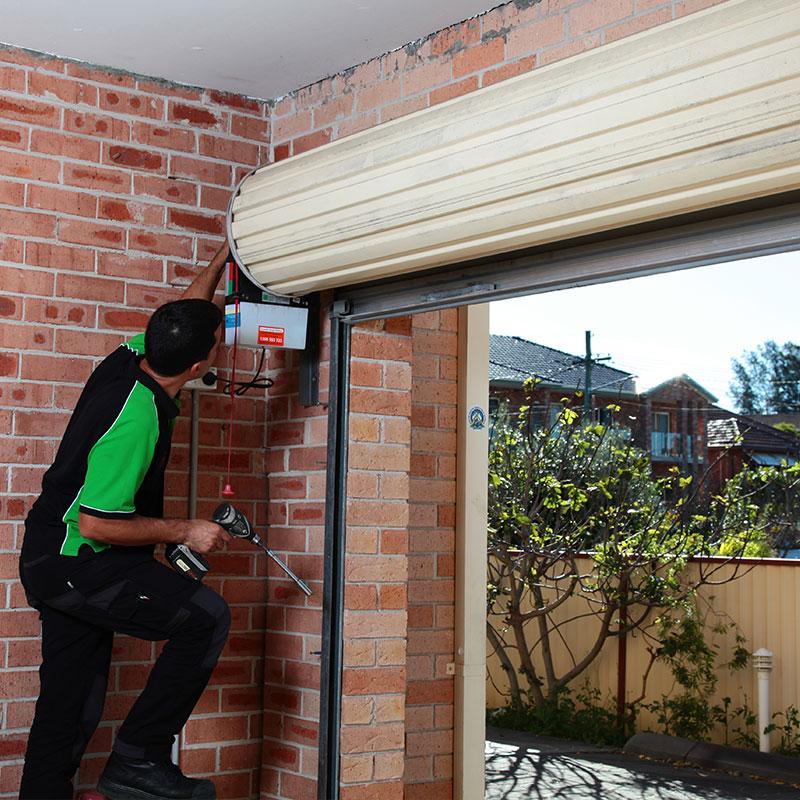How to Close a Garage Door That Is Stuck Open? Your garage door plays a pivotal role in securing your property and belongings. However, it can be immensely frustrating when it gets stuck in the open position, leaving your garage exposed to the elements and potential security risks. In this article, we will guide you through the steps to close a garage door that is stuck open, ensuring the safety and security of your home.

Understanding the Causes of a Stuck Garage Door
Before we dive into the solutions, it’s important to understand why your garage door might get stuck open. There can be various reasons, including:
- Obstructed Tracks: Debris, dirt, or objects in the tracks can prevent the smooth movement of the door.
- Damaged Tracks: Bent or misaligned tracks can hinder the door’s operation.
- Malfunctioning Springs: Broken or worn-out torsion or extension springs can make it difficult to close the door.
- Sensor Issues: Misaligned or malfunctioning safety sensors can prevent the door from closing.
Before you attempt to close a stuck garage door, prioritize safety.
- Disconnect the Power: Unplug the automatic garage door opener or turn off the power source to ensure the door won’t accidentally move while you’re working on it.
- Clear the Area: Remove any obstructions, vehicles, or objects in the door’s path.
- Secure the Door: If possible, use c-clamps or locking pliers on the tracks to prevent the door from moving.
Steps to Close a Stuck Garage Door
Now, let’s explore the steps to close a garage door that’s stuck open:
- Inspect the Tracks: Start by visually inspecting the tracks for any debris, dirt, or objects obstructing the door’s movement. If you find any, remove them to ensure a clear path for the door.
- Check for Track Misalignment: Examine the tracks for misalignment or damage. If you notice bent tracks, use a rubber mallet or a block of wood to carefully tap them back into their correct position. Make sure the tracks are level and parallel.
- Lubricate the Tracks: Lubricate the tracks with a silicone-based or garage door lubricant to ensure smooth movement. Avoid using grease or oil-based lubricants as they can attract dirt and debris.
- Test the Springs: Inspect the torsion or extension springs. If you notice any damage or wear, it’s best to contact a professional for spring replacement. Attempting to repair or replace garage door springs yourself can be dangerous.
- Check the Safety Sensors: The safety sensors are typically located near the bottom of the tracks on either side of the door. Ensure they are clean and properly aligned. If they’re misaligned or malfunctioning, it may prevent the door from closing. Adjust and clean the sensors as needed.
- Manually Close the Door: Once you’ve addressed any issues with the tracks, springs, and sensors, you can manually close the door. To do this, pull the emergency release cord hanging from the opener. This allows you to disconnect the door from the automatic opener, and you can then gently lower the door by hand.
- Reconnect the Power: After manually closing the door, remember to reconnect the power to the automatic opener.
- Test the Door: Finally, test the door’s operation by using the remote control or wall switch. Ensure that it opens and closes smoothly without any issues.
When to Seek Professional Help
If you follow these steps and your garage door is still stuck open, it may be time to call a professional garage door technician. They have the expertise and tools to diagnose and repair more complex issues. Attempting to force a stuck garage door closed can lead to further damage or pose safety risks, so it’s always a good idea to seek professional assistance when needed.
Conclusion
A stuck open garage door can be a significant inconvenience and security concern, but with the right approach, you can often resolve the issue yourself. By inspecting and maintaining the tracks, addressing sensor problems, and performing necessary lubrication, you can restore your garage door’s functionality. However, always prioritize safety and seek professional assistance when the problem is beyond your DIY capabilities. Your garage door plays a crucial role in protecting your home, and keeping it in good working order is essential.



Leave a Reply